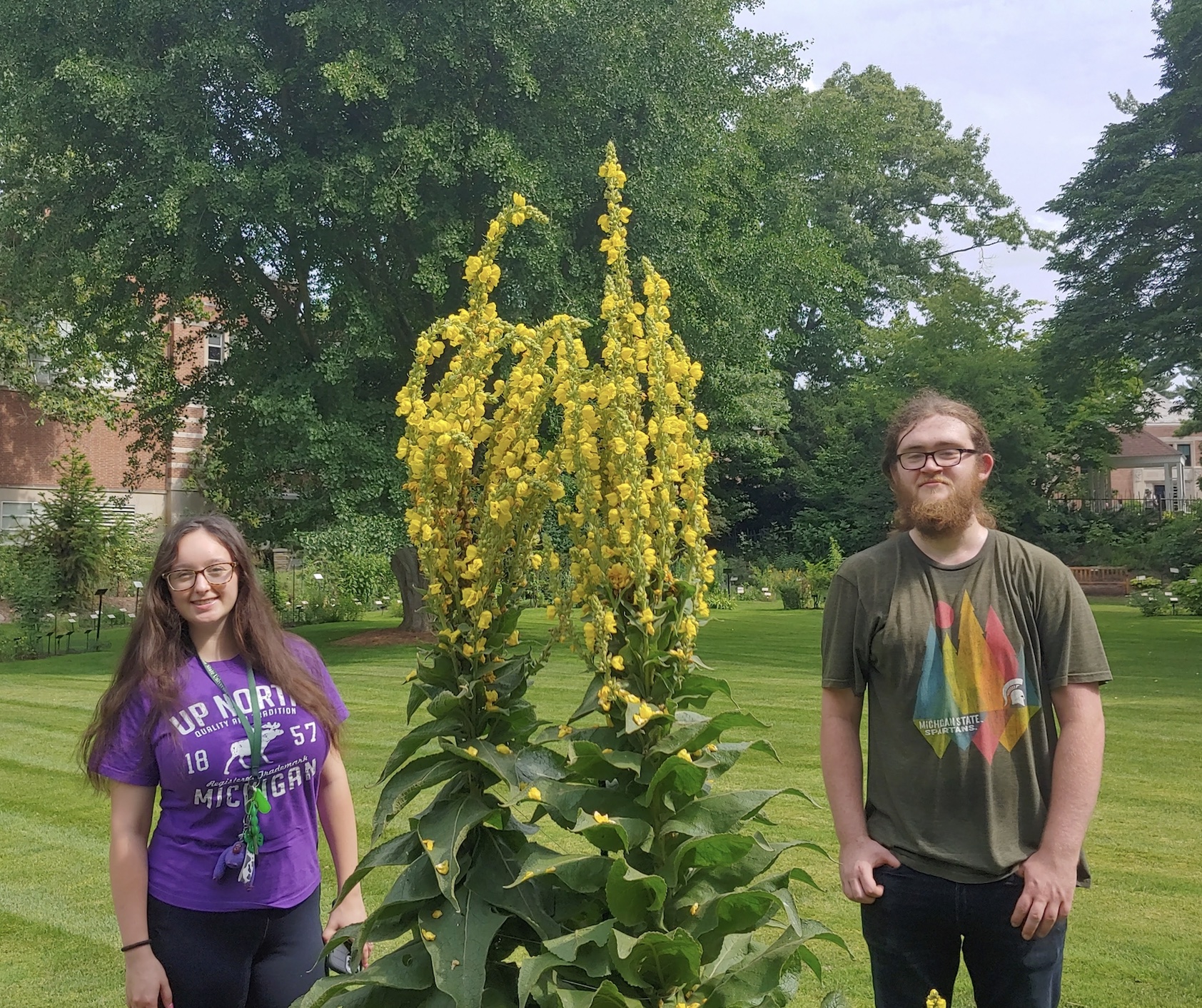Bringing the Beal Seed Experiment into the modern era
Dr, Margaret Fleming conducts research to answer questions about the longevity of 140-year-old seeds from the Beal Seed Experiment.
Project will ensure Beal legacy continues
In a new project, PSM’s Dr. Margaret Fleming and Drs. Lars Brudvig, David Lowry, Frank Telewski (Plant Biology), and Marjorie Weber (formerly of Plant Biology, now at UM) will address fundamental questions about seed longevity in natural conditions using the most current molecular techniques – in the context of global climate change.
The Beal Seed Experiment is one of the longest-running scientific experiments in human history and tests the vitality of seeds buried for this purpose more than 140 years ago.
In the new project “we hope to look at all the species Beal included (listed below) along with how long it took for that species to stop germinating from the bottle,” Fleming says.
Picking apart pervasive weedsSince the latest seed bottle was extracted from the garden, the team has identified several ungerminated seeds (including two Verbascum seeds) “Thanks to the hard work of Michael Ozolins,” Fleming says. Robyn Zallen is compiling on a database of other seed burial experiments, “which will be the starting point for designing a new and improved seed burial and longevity study.” Lauren Stanley, a post-doc in David Lowry's lab, has confirmed that the plant from this year and two plants from the 2000 bottle that looked like V. thapsus x V. blattaria hybrids are indeed hybrids. “The question now is,” Fleming says, “where are these hybrids in the wild?” Verbascum DNA is easy to extract from newly sprouted seeds, Fleming says “even if the seeds were over 100 years old. We will have to be careful about knowing how old of a seed our ‘modern-day’ plants sprouted from. We can also look at some of the other notorious long-lived weed species like Malva rotundifolia, Rumex crispus, or Oenothera biennis.” |
One of the Verbascum blattaria plants that germinated from the latest bottle is being used to generate a reference genome by the International Weed Genomics Consortium (https://www.weedgenomics.org/) thanks to Corteva and FFAR (Foundation for Food and Agriculture Research). “This will be a wonderful resource for the comparative studies we have planned,” Fleming says., |
Genomic analysis will provide perspective on evolutionary processes over the past 140 years in these plant species, while transcriptomics will reveal whether non-germinating seeds are truly dead—or just dormant.
“We wonder how present-day vs 141-year-old germplasm differs and if we can relate any changes to herbicide use, land use change, or climate change,” Fleming says.
This work would provide a baseline for the next phase of the Beal Seed Experiment, and would help optimize future germination protocols to ensure every seed is given the best chance of germinating. As well, molecular data from these seeds would be the first of its kind.
“It’s a great opportunity to expand our knowledge of seed longevity,” says Fleming. “We already have substantial interest from researchers at other institutions about doing a distributed buried seed experiment. We want to ensure that MSU is the lead institution, carrying forward our leadership from the current experiment to the next iteration.”
 |
As an undergrad in Horticulture (with Dr. Erin Hill), Chloe Grabb presented her work on dormancy-breaking techniques in common rag weed. Grabb is now working on working on the Beal Seed Experiment for her PhD in Dr. Fleming’s lab.
|
|
Species |
Extent of seed longevity in bottle (years) |
|
Ambrosia artemisiifolia |
40 |
|
Trifolium repens |
5-10 |
|
Agrostemma githago |
<5 |
|
Bromus secalinus |
<5 |
|
Erechtites hieracifolia |
<5 |
|
Euphorbia maculata |
<5 |
|
Thuja occidentalis |
<5 |
|
Verbascum blattaria |
>141 |
|
Verbascum sp. |
>141 |
|
Verbascum thapsus |
100-120 |
|
Malva rotundifolia |
120-141 |
|
Anthemis cotula |
30-35 |
|
Setaria glauca |
30-35 |
|
Stellaria media |
30-35 |
|
Amaranthus retroflexus |
35-40 |
|
Capsella bursa-pastoris |
35-40 |
|
Lepidum virginicum |
40-50 |
|
Plantago major |
40-50 |
|
Portulaca oleracea |
40-50 |
|
Brassica nigra |
50-60 |
|
Polygonum hydropiper |
50-60 |
|
Oenothera biennis |
80-90 |
|
Rumex crispus |
80-90 |



 Print
Print Email
Email





